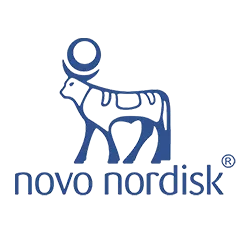
Top 50 Problem Management Interview Questions and Answers - Part 1
Behavioral Interview Questions (Problem Manager, ITSM Analyst, Coordinator)
-
Tell me about a time you led a problem investigation from start to finish successfully.
Answer: Sample: “In my last role, a critical payment system kept failing weekly. I took ownership as Problem Manager, assembling a cross-functional team (developers, DBAs, network engineers). We followed the ITIL problem management steps: logging the problem, conducting a thorough root cause analysis, implementing a fix, and documenting everything. I facilitated daily update meetings and ensured open communication. We eventually traced the root cause to a memory leak in a service (using heap dump analysis via Splunk logs) and implemented a patch. After the fix, incidents dropped to zero – eliminating that recurring service disruption. I closed the problem record with a detailed RCA report and a knowledge article for future reference. This effort improved system stability and prevented future incidents, demonstrating effective problem management end-to-end.”
-
Give an example of a time you had to coordinate multiple teams during a critical problem. How did you manage it?
Answer: Sample: “During a major outage affecting our e-commerce site, I acted as the Problem Coordinator. Multiple teams were involved – infrastructure, application support, database, and vendors – and tensions were high. I established an open, blameless communication environment, encouraging each team to share findings without fear. I set up a virtual war room and assigned specific investigative tasks to each team, while I tracked progress on a shared dashboard. By focusing everyone on the critical service impact and not on finger-pointing, we isolated the issue (a misconfigured load balancer) within a few hours. I provided frequent updates to stakeholders and ensured all teams were aligned on the plan. Post-resolution, I thanked the teams and documented the collaborative process. This experience showed that clear communication, defined roles, and a no-blame culture help coordinate teams effectively during a crisis.”
-
Describe a situation where a problem had no clear root cause at first. How did you handle the uncertainty and pressure?
Answer: Sample: “We once faced an intermittent database performance issue – there was no obvious root cause initially. As the Problem Manager, I stayed calm under pressure and approached it systematically. I organized a brainstorm with database admins and developers to hypothesize possible causes (network latency, query lock contentions, storage I/O issues). Recognizing that complex problems often have multiple contributing factors, I used a fishbone diagram to map out all potential categories (software, hardware, user behavior, etc.). We also involved a senior architect for a fresh perspective, since no one person has all the insight. Simultaneously, I managed management’s expectations – I communicated that we were in investigation mode and provided interim findings to reassure them. After extensive analysis and monitoring, we discovered a sporadic backup job was locking tables. We rescheduled that job, resolving the issue. The key was persistence, leveraging team expertise, and transparent communication until the root cause emerged.”
-
Tell me about a time when you proactively identified a problem before it became a major incident.
Answer: Sample: “In a previous position as an ITSM Analyst, I noticed a trend of rising memory usage on one of our critical servers over a month of monitoring. There had been no incident yet, but the pattern was concerning. Using ServiceNow reports and Splunk, I performed a trend analysis on incident records and logs. The data suggested a potential memory leak that could eventually cause an outage. I raised a proactive problem record even before an incident occurred. Then, I alerted the application team and we conducted a root cause analysis during a maintenance window, identifying inefficient caching in the code. We deployed an optimized patch well ahead of any failure. Because of this proactive problem management approach, we prevented a major incident entirely, improving service availability. Management appreciated that our team didn’t just react to fires but also anticipated and prevented them.”
-
How do you handle situations where upper management or customers want an immediate root cause, but you need more time to analyze the problem?
Answer: Sample: “It’s common to face pressure for quick answers. In such cases, I first empathize and acknowledge the urgency to the stakeholder. I then explain the difference between incident resolution and true root cause analysis – incident management aims to restore service quickly, whereas problem management is more complex and may take longer to uncover the underlying cause. I usually provide a high-level timeline for the investigation, highlighting the steps we’ll take (data gathering, replication, RCA techniques) so they understand the process. If I have any preliminary findings or a hypothesis, I share it with appropriate caveats. For example, I might say, ‘We’ve ruled out X and Y causes and are focusing on Z, I’ll have an update in 24 hours.’ Throughout, I maintain transparency without speculating. This approach has helped manage expectations – stakeholders appreciate the communication. By educating them that a thorough problem analysis ensures effective and permanent solutions (not just quick fixes), I secure the time needed for a proper investigation.”
-
Describe a time when you implemented a process improvement in the problem management process. What was it and what was the result?
Answer: Sample: “At my previous company, we had a backlog of problem records and inconsistent analyses. I proposed and implemented a Problem Post-Mortem template and process. This included a standard RCA report format (with sections for timeline, root cause, workaround, solution, lessons learned) and a requirement that every major incident go through a post-incident problem review. I also initiated monthly Problem Review meetings for open problems. The improvement focused on continual learning and process iteration, since problem management should continuously evolve and improve. The result was significant: within 6 months, our known error documentation improved (KEDB grew by 40%), and we saw a 25% reduction in repeat incidents because teams were learning from past issues. Additionally, technicians began to proactively address issues because the culture shifted to one of continuous improvement and knowledge sharing. This process improvement not only cleared the backlog but also increased our team’s problem-solving maturity.”
-
Tell me about a failure or mistake you encountered in a problem management situation. How did you handle it and what did you learn?
Answer: Sample: “In one situation, I led an investigation into frequent application crashes. Under pressure to close the issue, I initially jumped to a conclusion that a database query was the root cause and pushed a quick fix. Unfortunately, the crashes continued – I had been too narrow in my analysis. I owned this mistake openly. In the follow-up analysis, I encouraged the team to voice any overlooked factors, emphasizing our blameless problem-solving culture. We discovered that aside from the database query, a memory leak in a third-party library was also contributing. We implemented a comprehensive fix for both issues. I learned the importance of thorough verification and not succumbing to pressure for quick closure. The experience reinforced that problems often have multiple causes and that fostering an environment where the team can admit mistakes and continue investigating is crucial. After this, I also improved our process by adding a peer review step for RCA conclusions. This failure ultimately made me a stronger Problem Manager, teaching me about humility, diligence, and the value of a no-blame review where the focus is on learning and preventing future issues.”
-
How do you handle conflicting priorities when multiple high-impact incidents and problems are happening simultaneously?
Answer: Sample: “This is a real test of organization. I first assess impact and urgency for each situation. For example, if I have one problem causing customer-facing outages and another causing a minor internal glitch, I will prioritize the one with higher business impact. I also consider factors like the number of users affected, potential financial or safety implications, and whether a workaround exists. In practice, I often use an impact vs. urgency matrix aligned with ITIL guidelines to set priority. According to best practice, we focus on problems affecting critical services and business value first. If multiple issues are truly critical, I don’t hesitate to delegate – perhaps I lead one problem investigation and assign a deputy to another, ensuring each has ownership. Communication is key: I inform stakeholders about what we’re addressing first and why (e.g., “We’re focusing on Problem A because it impacts our customer portal, while Problem B is limited to an internal tool; we’ll tackle B as soon as A is under control”). By clearly prioritizing based on impact and keeping everyone informed, I can handle simultaneous problems methodically. Over time, this approach has been effective in ensuring that the most damaging issues are resolved first, minimizing overall risk to the business.”
-
Give an example of how you have used metrics or data to improve problem management performance.
Answer: Sample: “In my previous role, I was responsible for monthly ITSM metrics. I noticed from our reports that the average time to resolve problems was very high – some problems remained open for over 180 days – and the number of known errors documented was low. Using these data, I initiated an improvement plan. First, I introduced a metric for “Average Time to Start RCA” to ensure we begin analysis quickly after logging a problem. I also started tracking the ratio of known errors to problemslogged. Over a quarter, we saw that documenting known errors (with workarounds) rose by 30%, indicating better knowledge capture. Additionally, by focusing the team on resolving older problems (through weekly review meetings), our “problems unresolved > 30 days” count dropped significantly. For example, our backlog of aged problems decreased from 50 to 20 in three months. The data also showed a decrease in repeat incidents: as we resolved root causes, the number of incidents linked to those problems went down, which I presented to management. By leveraging metrics – average resolution time, backlog count, known error count – I identified where our process was slow and implemented changes that led to faster resolutions and better documentation. It demonstrated how data-driven insights can directly improve problem management outcomes.”
-
Describe how you have mentored or guided a team member in learning problem management practices.
Answer: Sample: “As a Problem Manager, I see part of my role as growing the team’s capabilities. One example: a junior ITSM analyst was new to problem management and struggled with root cause analysis. I took him under my wing during a recurring network issue investigation. I started by explaining frameworks like ITIL’s problem lifecycle and RCA techniques. We worked together on a case, where I had him lead a 5 Whys analysis (with me observing). After sessions, I provided feedback – for instance, how to frame “why” questions and not jump to conclusions. I also shared templates I created for problem investigation (like a checklist of what data to gather, how to document findings). Over a few months, I gradually let him handle smaller problem investigations independently, while I reviewed his RCA reports. I encouraged him to present one of his problem cases in our team meeting, which boosted his confidence. Throughout, I emphasized a growth mindset – that being curious and learning from each incident makes one a better problem solver. By sharing knowledge and encouraging continuous learning (as ITIL and industry best practices encourage), I helped him become proficient. In fact, he went on to identify and resolve a tricky memory leak issue on his own, which was a proud moment. Mentoring not only helped the individual team member but also strengthened our overall problem management function.”
-
Have you ever encountered resistance from a team when investigating a problem (for example, a team defensive about their application being blamed)? How did you handle it?
Answer: Sample: “Yes – this happens, especially when a problem spans multiple teams. I remember a situation where the database and application teams each thought the other was responsible for a severe slowdown issue. Tensions were high and there was a bit of finger-pointing. I addressed this by reinforcing a blameless approach: I convened a meeting and explicitly stated, “We’re here to find the cause, not blame. Let’s look at facts and data.” I backed that up by facilitating an open discussion where everyone could share observations without fear. For instance, the app team shared their logs and the DBAs shared query timings. When someone made a defensive comment, I redirected politely: “Let’s focus on what the logs show.” I also sometimes use data to diffuse tension – e.g., demonstrate that both the app and DB were showing stress at the same time, indicating both need examination. By the end of the investigation, the teams saw I was fair and focused on the technical cause (which turned out to be a misconfigured connection pool affecting both layers). After resolution, I held a brief retrospective emphasizing collaboration and lessons rather than blame. In summary, by setting a tone of collaboration, encouraging fact-based analysis, and promoting a no-blame culture, I overcame resistance and got the teams working together productively.”
-
Tell me about a time you had to convince leadership or customers to approve a costly or impactful problem resolution (for example, downtime for a permanent fix). How did you make the case?
Answer: Sample: “In one instance, we discovered that the root cause of frequent outages was an outdated middleware component. The permanent fix was to overhaul and upgrade that component – a project requiring planned downtime and significant effort. Management was initially hesitant due to the cost and potential customer impact during downtime. I built a case by presenting both technical findings and business impact analysis. I gathered data on how often the outages occurred and their cumulative downtime (e.g., 8 hours of outage in the past quarter), and translated that into business terms – lost sales transactions and customer dissatisfaction. Then I contrasted it with the projected downtime for the fix (perhaps a 2-hour maintenance) and explained the long-term benefits. I performed a cost-benefit analysis, which I shared: the upgrade cost vs. the cost of ongoing outages and firefighting. I also cited risk: not doing the fix kept us vulnerable (which aligned with our risk management policy). Additionally, I pointed out that the workaround (manual restarts) was consuming many IT hours. Once leadership saw the numbers and understood that this change would stabilize our service (improving SLA compliance and customer experience), they agreed. I scheduled the change through our Change Management process (getting necessary approvals) and communicated clearly with customers about the maintenance window. The result was that after the fix, outages dropped to near zero. In essence, speaking the language of both IT and business – cost, risk, benefit – was key. By demonstrating ROI and alignment with business continuity goals, I successfully got buy-in for a costly but critical problem resolution.”
-
How do you ensure that knowledge gained from resolving problems is captured and shared with the organization?
Answer: Sample: “Capturing knowledge is a vital part of problem management for me. I take several steps to ensure we don’t reinvent the wheel: First, for every significant problem resolved, I require that a Known Error record be created in our Knowledge Base or KEDB. This record includes the root cause, symptoms, and the workaround or solution. For example, after resolving a tricky email server issue, we documented the known error so if it recurred, the Service Desk could quickly apply the workaround. In ServiceNow, this is easy – with one click we can generate a knowledge article from the problem, which contains the root cause and workaround. Second, I set up post-problem review meetings where the team presents what was learned to the broader IT group. This way, other teams (operations, development, etc.) become aware of the issue and fix. I also champion a culture of writing things down: if an analysis uncovered a non-obvious cause, we add a note in the KEDB or our wiki about how to detect it in the future. For recurring issues, I maintain a “Problem Playbook” – a repository of past problems and diagnostic steps – and encourage new hires to study it. Lastly, I measure knowledge capture: one KPI I track is the number of known errors documented versus problems logged. A higher ratio indicates we’re effectively recording solutions. These practices ensure that when incidents occur, the team can search our KEDB and quickly find if it’s a known problem with a workaround – reducing downtime. Overall, by systematically recording known errors and promoting knowledge sharing, I help the organization retain valuable problem-solving lessons and improve future incident response.”
-
Describe a scenario where you had to work under a very tight deadline to find a root cause. How did you manage your time and stress, while still performing a thorough analysis?
Answer: Sample: “I recall a major outage that happened just hours before a big product launch – the pressure was enormous to identify the root cause before the launch window. I knew stress could lead to oversight, so I took a structured approach to stay on track. First, I quickly assembled a small strike team of the most relevant experts (instead of too many people, which can cause chaos). We divided tasks – one person checked recent changes, another pulled system logs, I analyzed application metrics. This parallel processing saved time. I also leveraged our tools heavily: for instance, I ran automated log searches in Splunk to pinpoint error spikes and correlated them with deployment times. Modern tools and AI assistance can surface insights fast – and indeed we got a clue from our monitoring alerts within minutes. Throughout, I maintained frequent communication with stakeholders, giving updates every 30 minutes, which also bought us a bit of patience from management. To manage stress, I focused on facts and the process rather than the clock – essentially treating it like any other problem but faster. I also wasn’t afraid to implement a stop-gap fix if needed. In this case, within 2 hours we found that a configuration file was corrupted during deployment; we restored a backup as a quick fix (restoring service), then continued to investigate the underlying deployment bug for a permanent solution. We met the deadline for launch. The key was staying organized under pressure – using automation for speed, clearly prioritizing analysis steps, and communicating continuously. After the fact, I did a retrospective to identify what we could automate further next time (because tight deadlines might happen again). So, I turned a stressful scenario into an opportunity to improve our rapid RCA playbook.”
-
How do you stay updated on the latest industry practices and technologies in problem management?
Answer: Sample: “I make it a point to continuously learn, as the ITSM field evolves quickly. I regularly follow industry-leading blogs and forums – for example, I read ServiceNow’s and Splunk’s blogs on ITSM and incident response, which often discuss new features or approaches. I also participate in the ServiceNow Community to see what challenges others are solving. Additionally, I attend webinars or local meetups on ITIL and problem management. Recently, I completed the ITIL 4 Foundation certification, which updated my knowledge on the latest ITIL practices (like the shift from processes to practices and the emphasis on value streams). I’m aware that automation and AI have become huge in ITSM – for instance, many organizations are adopting AIOps tools that can correlate events and even suggest root causes. I keep an eye on these trends by reading reports (the Gartner and BMC blogs have been insightful – one statistic I noted is that companies using generative AI in ITSM saw a 75% reduction in ticket resolution times). To get hands-on, I’ve experimented with some AIOps features in our monitoring tools, so I understand how machine learning might flag anomalies. Internally, I share articles or insights in our team’s weekly meeting, so we all stay sharp. In short, I treat learning as an ongoing part of my job – leveraging online resources, certifications, and professional communities to stay at the 2025 level of best practices. This ensures I’m bringing fresh ideas to improve our problem management continually.”
Hiring Partners










































